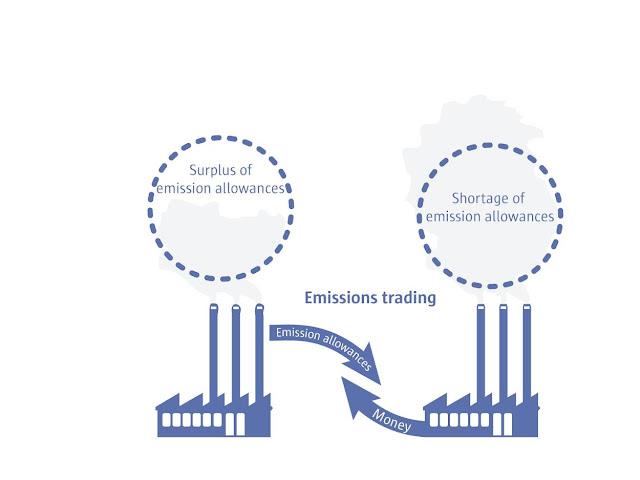Emissions Trading Market Is Estimated To Witness High Growth Owing To Increasing Adoption of Carbon Emission Reduction Policies
The global emissions trading market is estimated to be valued at US$334.80
billion in 2023 and is expected to exhibit a CAGR of 24% over the forecast
period 2023-2030, as highlighted in a new report published by Coherent Market
Insights.
Market Overview:
The emissions trading market refers to the buying and selling of emissions
permits or credits, which represent the right to emit a certain amount of
greenhouse gases. This market allows companies to meet their emissions
reduction targets by either reducing their own emissions or purchasing credits
from other companies that have emitted less. The advantages of implementing
emissions trading include cost-effectiveness, flexibility, and the ability to
incentivize innovation in emission reduction technologies. With the increasing
concerns over climate change and the need to reduce greenhouse gas emissions,
the emissions trading market is expected to grow significantly in the coming
years.
Market Key Trends:
One key trend in the emissions trading market is the growing adoption of carbon
emission reduction policies by governments and organizations worldwide.
Governments are implementing regulations and schemes such as cap-and-trade
systems to limit and reduce the total emissions of greenhouse gases.
Additionally, companies are voluntarily participating in emissions trading to
demonstrate their commitment to sustainability and environmental
responsibility. This trend is driven by the increasing awareness of climate
change and the need to mitigate its effects. As a result, the demand for
emissions permits and credits is expected to increase, driving the growth of
the emissions trading market in the forecast period.
PEST Analysis:
Political: The political factors impacting the emissions trading market involve
government policies and regulations. Governments across the globe are
implementing stricter regulations to curb greenhouse gas emissions, which is
driving the growth of emissions trading. For instance, the Paris Agreement
signed by several countries aims to limit global warming, encouraging the
adoption of emissions trading.
Economic: Economic factors affecting the emissions trading market include the
cost of carbon credits and market incentives. The increasing demand for carbon
credits and the introduction of market-based mechanisms are driving the growth
of this market. Additionally, the potential for financial gains through
emissions trading is attracting both companies and investors.
Social: Social factors influencing the emissions trading market include public
awareness and acceptance of climate change issues. With increasing awareness
about the environmental impact of greenhouse gas emissions, individuals and
organizations are more inclined to support and engage in emissions trading,
contributing to market growth.
Technological: Technological advancements play a crucial role in the emissions
trading market. Development in carbon capture and storage technologies, as well
as the use of artificial intelligence and blockchain solutions, are improving
the efficiency and transparency of emissions trading. These technological
advancements are expected to further accelerate the growth of the market.
Key Takeaways:
The global
emissions trading market is projected to witness high growth,
exhibiting a CAGR of 24% over the forecast period (2023-2030). This growth can
be attributed to increasing government regulations and policies aimed at
reducing greenhouse gas emissions. The market size for 2023 is estimated to be
US$ 334.80 billion.
In terms of regional analysis, Asia Pacific is expected to be the
fastest-growing and dominating region in the emissions trading market.
Increasing industrialization, urbanization, and the adoption of renewable
energy sources in countries like China, India, and Japan are driving the demand
for emissions trading in the region.
Key players operating in the emissions trading market include BP Plc, Royal
Dutch Shell Plc, Total SE, Chevron Corporation, ExxonMobil Corporation, Engie
SA, RWE AG, ON SE, Vattenfall AB, Gazprom, Mitsubishi UFJ Financial Group
(MUFG), JPMorgan Chase & Co., Goldman Sachs Group, Inc., Citigroup Inc.,
and Barclays PLC. These key players are actively involved in emissions trading
and are expected to contribute significantly to market growth.




Comments
Post a Comment